Smart agriculture system stand out when you consider all the IoT-enabled solutions. Agriculture boasts of the most dynamic rates of IoT adoption.
Agriculture as an industry has no other option but to embrace innovations, as, by 2050, it is estimated that the global population will cross 10 billion. In such a scenario, you cannot overlook the importance of agriculture monitoring.
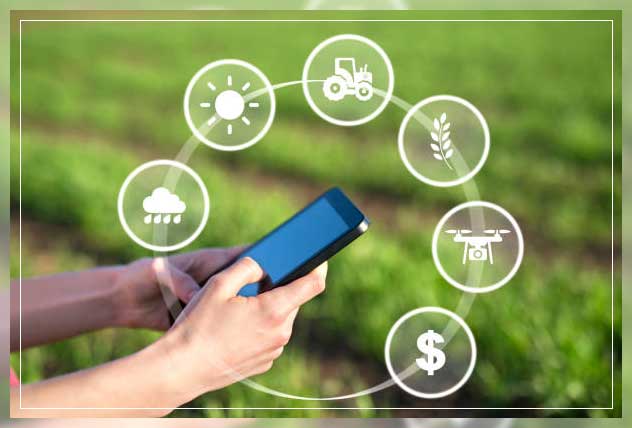
The companies that manage to satisfy the growing demand for organic food products through agriculture monitoring systems have been predicted to gain a distinct competitive edge.
Here we discuss the range of existing agriculture monitoring solutions and explore the benefits of their use.
Need for Smart Monitoring Solution in Agriculture
Industry veterans have predicted that IoT applications will enable farmers to increase production rates by 70% by 2050. Thus, IoT has a lot to offer to alleviate the pains farmers face regularly.
Agro-tech is a thriving industry, and today, an extensive range of intelligent farming systems enable farmers to meet their daily challenges. Planting, crop gathering, watering, and pest control – agriculture field monitoring systems collect a range of metrics farmers can use to manage their tasks efficiently.
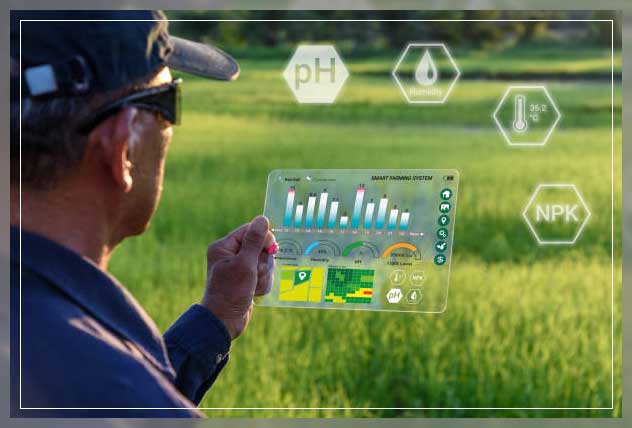
Agriculture is one of the most resource and labor-intensive industries. The challenges faced by farmers today include the following:
Regular maintenance equipment
Agriculture as an industry is heavily machinery-dependent. Maintenance operations consume a lot of time and impact the budget even when scheduled regularly. Even if you take care of the schedule and budget, there is a factor of unpredictability that you cannot eliminate. When a piece of machinery goes out of order, it usually leads to unexpected downtimes.
Correct Estimation of quantity of water
Growing plants need water, but the amount of water differs according to soil humidity levels. To measure these levels, The farmers have to go to the field and take regular manual tests to measure these levels.
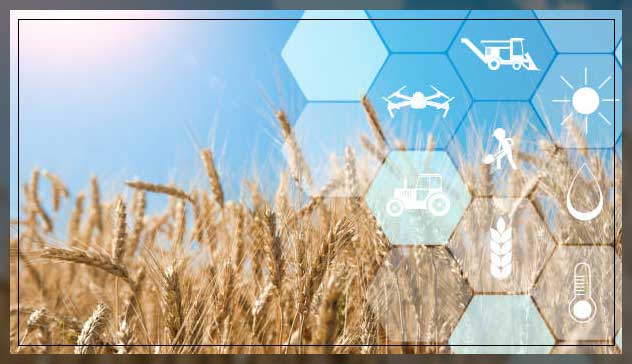
Alternatively, they can use smart sensing technology, which is more time efficient, convenient, and accurate.
Elimination of water wastage and overhead expenses
If you fail to collect accurate plant soil humidity information, it may result in the underwatering or overwatering of the plants. Poorly watered plants are frail and dry, but overwatering leads to water wastage and unpredicted water expenses.
Estimation of accurate optimal sowing times
Each plant has its own optimal sowing time based on various environmental factors. However, it is often impossible to correctly estimate this time.
Measurement of soil temperature and moisture levels
Soil temperature and moisture levels are vital metrics that the farmers need to collect to estimate the state of crops and take appropriate corrective action. However, it’s usually impossible to measure these metrics correctly without IoT agriculture monitoring systems.
Pest control
The farmers face a formidable challenge from the pests. Successful pest control involves detecting pests, location, activity, and behavior patterns. It is pretty challenging to have pest control without IoT-based pest control systems.
Examples of Smart Monitoring Solution in Agriculture
Here, we present some of the Smart Agriculture Monitoring Solutions that have gained acceptance in the farming community.
Soil condition monitoring
Soil condition is an essential indicator in helping farmers decide on the optimal planting and crop gathering time. The farmers get instantly alerted of soil moisture and salinity when they use IoT sensors for soil condition monitoring. Soil temperature and air temperature are two other essential metrics that need to be measured. Accurately estimating these metrics enables farmers to plan watering times and know when to expect pests.
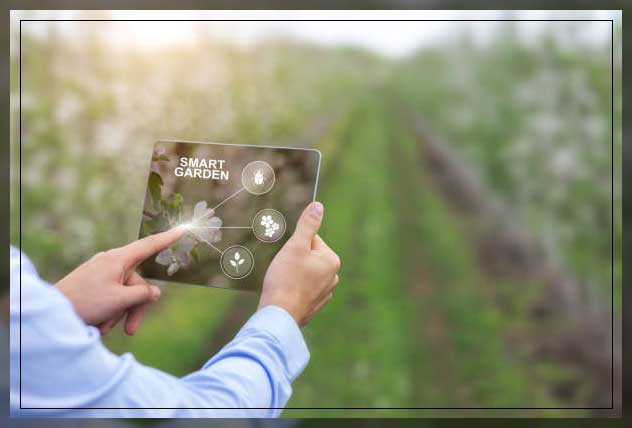
Soil condition monitoring requires hardware and software systems to operate in real-time and alert users if there are any significant changes.
One such solution is CropX, an ag-tech platform for remote agriculture monitoring. It uses intelligent agriculture sensors to collect data and cloud infrastructure for data processing and storage. These data are analyzed to deliver information in a readable format to a user’s smartphone or computer screen.
Weather monitoring
One of the most common application fields for IoT in agriculture is Weather monitoring . In crop farming, yields heavily depend on the environment, which is inherently volatile. Weather monitoring solutions located directly on the farms alert farmers to changing conditions. These weather conditions include humidity, solar radiation, wind speed, precipitation, and temperature.
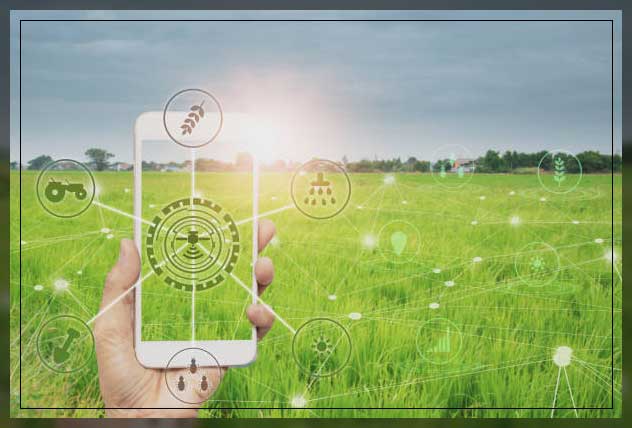
Weather monitoring platforms like allMETEO, Pycno, and Smart Element are vivid examples of how intelligent sensing technology in agriculture can help deliver effective weather notifications directly to farmer’s laptops and smartphones, enabling them to take action immediately.
Greenhouse automation systems
A fragile and sensitive greenhouse ecosystem requires ongoing control and maintenance. Smart greenhouse automation, like Growlink, GreenIQ, and Farmapp, illustrates the application of remote sensing in agriculture. They can help maintain optimal microclimate conditions and manage lighting, humidity, temperature, and carbon dioxide levels. The increase in management capabilities and instant alerts maximizes the efficiency of greenhouse Dubai farming.
Crop monitoring systems
As crops grow and ripen, many things can go wrong: infestations with pests, adverse environmental conditions, or diseases can potentially cause irrevocable harm before farmers even notice. Intelligent sensing technology collects metrics about the state of the crops (health indicators like temperature, humidity). This enables the farmers to take timely measures should anything go wrong.
Moreover, Arable and Semios can help detect if the crop is ripe, thereby enabling the farmers to plan the exact harvest time.
Digital Pest Management
Pest infestations are one of the significant issues encountered by crop farmers regularly. Knowing when there will be pest infestations can be challenging. Pointing out their exact activity and location is practically impossible without frequent trips to the field. Smart agriculture monitoring systems can tackle these problems. They can also help allocate the precise quantity of chemicals required to eliminate pests in each particular case.
IoT pest detection systems such as Strider count insects and determine their locations in real time. This detection is done using an insect camera and sensors for crop pest detection placed directly in the field. Agritech companies like Fieldin and DTN offer similar solutions for IoT-based pest control.
Livestock monitoring systems
Apart from weather and crop monitoring, agriculture monitoring solutions have gained broader application in livestock farming. A combination of sophisticated IoT hardware such as wearables based on smart-sensing technology with state-of-the art IoT software, ag-tech solutions like Cowlar help protects and guard livestock.
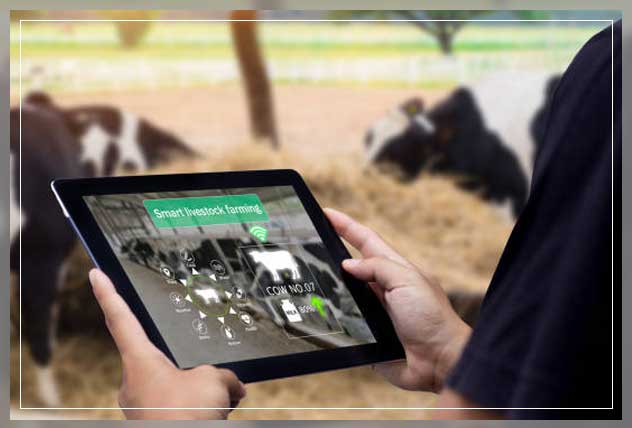
SCR specializes in livestock remote monitoring using cow neck collars to track cow activity, health, and location. Remote sensing in agriculture, coupled with advanced analytical software, can deliver insights into cow nutrition and the health of the entire herd.
End-to-end farm management systems
The entire area of the farm can accommodate smart agriculture sensors, which act as essential data collection sources for a powerful, all-encompassing farm management system ranging from greenhouses to grazing fields. These systems can utilize advanced data analytics software and integrate seamlessly with procurement, inventory, and accounting databases to deliver insights and fully unleash their analytical potential.
Cropio and Farmlogs offer end-to-end farm management solutions for remote farm management based on IoT agriculture monitoring.
Advantages of using Smart monitoring solution in agriculture
So, how the next obvious question you may ask how recording and monitoring data improve agriculture? There is a vast range of agriculture remote monitoring applications, and so is their combined effect on livestock and crop farming.
All in all, the use of IoT monitoring solutions accounts for the following:
Maximized productivity
Agriculture crop monitoring systems are using IoT and timely measures to eliminate the usual threats increases crop yields. In livestock farming, IoT monitoring also makes for maximized productivity.
Improved quality
IoT monitoring systems help maintain optimal conditions to ensure better crop quality. For example, weather monitoring in agriculture helps estimate the exact supply of water, chemicals, and nutrients needed to grow high-quality crop yields. Thus, the farming products produced using IoT monitoring systems are also more capable of meeting market specifications than other products.
Reduced need for pesticides
Not only are pesticides toxic, but their use also entails expenses. Consequently, smart pest monitoring systems significantly reduce the need for pesticides, the costs involved, and the dangerous impact of chemicals on the environment and human health.
Predictability and control
Driven by real-time agriculture monitoring, data analytics predict the optimal harvest dates and ensure the security of supply contracts. The control farmers gain over time-to-market helps make farm processes more manageable.
Higher sales price
Greener, healthier products grown using the latest ag-technologies will have higher sales prices and ultimately bring more revenue.
Future casting
By collecting and processing data retrieved using smart agriculture monitoring, farmers can predict the future state of soils and environments and plan for next year’s crops. Thus, predictive analytics enable them to make calculated farm-management decisions and plan for the years ahead.
Bottom Line
Smart monitoring systems in agriculture is all about collecting insights from data. However, the data you collect on-site has to be sent to a processing unit. Therefore, the choice of the data transfer technology will depend on the distance the data has to travel. Advanced IoT based smart monitoring system reduces costs, maximizes efficiency.
Consequently, they help farmers to make data driven decisions. Furthermore, these steps ultimately propels crop and livestock farming practices to higher levels of ethics and professionalism. Although, you may feel that implementing smart monitoring systems requires time and investment, however, in the long run it usually proves worth the effort and the investment.
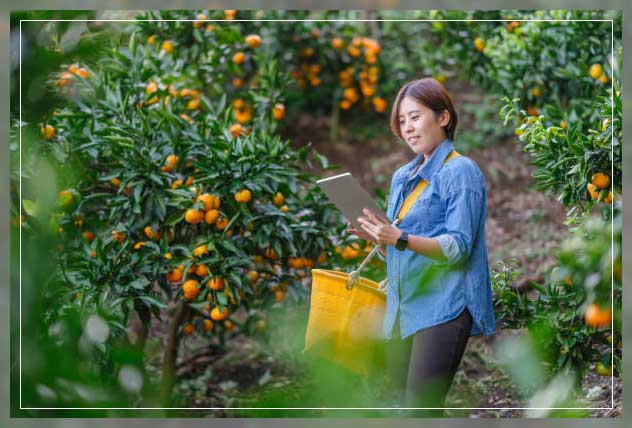





Pingback: Greenhouse Dubai: Step to Food Security - Al Ardh Alkhadra
Pingback: Do Plants Need UV Light? - Al Ardh Alkhadra